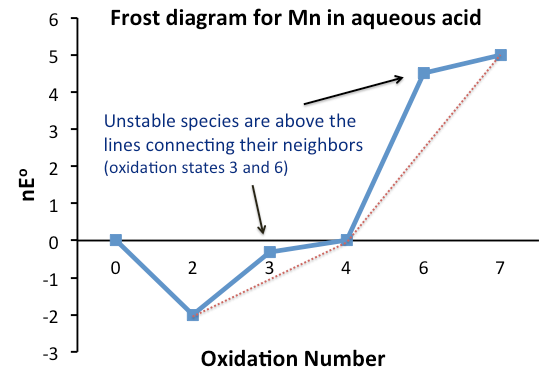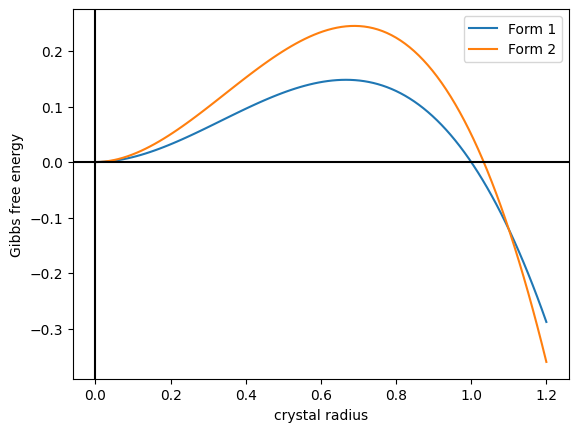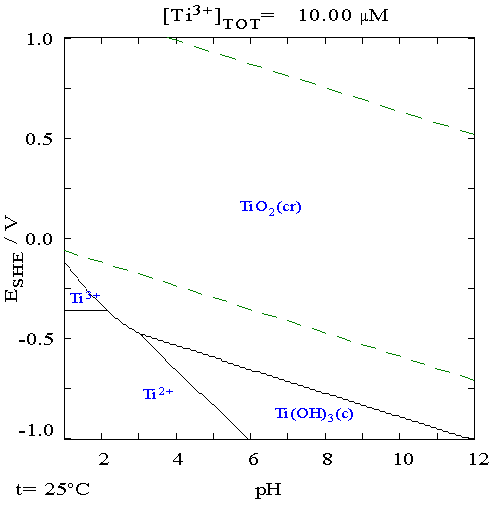|
Titanium Tribromide
Titanium(III) bromide is the inorganic compound with the formula TiBr3. It is a blue black paramagnetic solid with a reddish reflection. It has few applications, although it is a catalyst for the polymerization of alkenes. Production and structure TiBr3 can be produced by heating the tetrabromide in an atmosphere of hydrogen: :2TiBr4 + H2 → 2TiBr3 + 2HBr It can also be produced by comproportionation of titanium metal and titanium tetrabromide Titanium tetrabromide is the chemical compound with the formula TiBr4. It is the most volatile transition metal bromide. The properties of TiBr4 are an average of TiCl4 and TiI4. Some key properties of these four-coordinated Ti(IV) species are .... :Ti + 3TiBr4 → 4TiBr3 Two polymorphs of TiBr3 are known, each exhibiting octahedral Ti centers.Troyanov, S. I.; Rybakov, V. B.; Ionov, V. M. "Preparation and crystal structure of titanium tetrabromide, titanium tribromide and titanium(2+) tetrabromoaluminate(1-)" Zhurnal ... [...More Info...] [...Related Items...] OR: [Wikipedia] [Google] [Baidu] |
Titanium(III) Chloride
Titanium(III) chloride is the inorganic compound with the formula TiCl3. At least four distinct species have this formula; additionally hydrated derivatives are known. TiCl3 is one of the most common halides of titanium and is an important catalyst for the manufacture of polyolefins. Structure and bonding In TiCl3, each titanium atom has one ''d'' electron, rendering its derivatives paramagnetic, that is, the substance is attracted into a magnetic field. Solutions of titanium(III) chloride are violet, which arises from excitations of its ''d''-electron. The colour is not very intense since the transition is forbidden by the Laporte selection rule. Four solid forms or polymorphs of TiCl3 are known. All feature titanium in an octahedral coordination sphere. These forms can be distinguished by crystallography as well as by their magnetic properties, which probes exchange interactions. β-TiCl3 crystallizes as brown needles. Its structure consists of chains of TiCl6 octahedra th ... [...More Info...] [...Related Items...] OR: [Wikipedia] [Google] [Baidu] |
Titanium(III) Fluoride
Titanium(III) fluoride is the inorganic compound with the formula Ti F3. A violet, paramagnetic solid, it is one of two titanium fluorides, the other being titanium tetrafluoride. It adopts a defect perovskite-like structure such that each Ti center has octahedral coordination geometry, and each fluoride ligand is doubly bridging. Titanium(III) fluoride can be prepared by dissolution of titanium metal in hydrogen fluoride Hydrogen fluoride (fluorane) is an Inorganic chemistry, inorganic compound with chemical formula . It is a very poisonous, colorless gas or liquid that dissolves in water to yield hydrofluoric acid. It is the principal industrial source of fluori .... In air, it slowly oxidizes to titanium(IV). References Fluorides Titanium(III) compounds Titanium halides {{inorganic-compound-stub ... [...More Info...] [...Related Items...] OR: [Wikipedia] [Google] [Baidu] |
Titanium(IV) Bromide
Titanium is a chemical element; it has symbol Ti and atomic number 22. Found in nature only as an oxide, it can be reduced to produce a lustrous transition metal with a silver color, low density, and high strength, resistant to corrosion in sea water, aqua regia, and chlorine. Titanium was discovered in Cornwall, Great Britain, by William Gregor in 1791 and was named by Martin Heinrich Klaproth after the Titans of Greek mythology. The element occurs within a number of minerals, principally rutile and ilmenite, which are widely distributed in the Earth's crust and lithosphere; it is found in almost all living things, as well as bodies of water, rocks, and soils. The metal is extracted from its principal mineral ores by the Kroll and Hunter processes. The most common compound, titanium dioxide (TiO2), is a popular photocatalyst and is used in the manufacture of white pigments. Other compounds include titanium tetrachloride (TiCl4), a component of smoke screens and catalysts; and ... [...More Info...] [...Related Items...] OR: [Wikipedia] [Google] [Baidu] |
Inorganic Compound
An inorganic compound is typically a chemical compound that lacks carbon–hydrogen bondsthat is, a compound that is not an organic compound. The study of inorganic compounds is a subfield of chemistry known as ''inorganic chemistry''. Inorganic compounds comprise most of the Earth's crust, although the compositions of the deep Mantle (geology), mantle remain active areas of investigation. All allotropes (structurally different pure forms of an element) and some simple carbon compounds are often considered inorganic. Examples include the allotropes of carbon (graphite, diamond, buckminsterfullerene, graphene, etc.), carbon monoxide , carbon dioxide , carbides, and salt (chemistry), salts of inorganic anions such as carbonates, cyanides, cyanates, thiocyanates, isothiocyanates, etc. Many of these are normal parts of mostly organic systems, including organisms; describing a chemical as inorganic does not necessarily mean that it cannot occur within life, living things. History ... [...More Info...] [...Related Items...] OR: [Wikipedia] [Google] [Baidu] |
Ziegler–Natta Catalyst
A Ziegler–Natta catalyst, named after Karl Ziegler and Giulio Natta, is a catalyst used in the synthesis of polymers of 1-alkenes ( alpha-olefins). Two broad classes of Ziegler–Natta catalysts are employed, distinguished by their solubility: * Heterogeneous supported catalysts based on titanium compounds are used in polymerization reactions in combination with cocatalysts, organoaluminum compounds such as triethylaluminium, Al(C2H5)3. This class of catalyst dominates the industry. * Homogeneous catalysts usually based on complexes of the group 4 metals titanium, zirconium or hafnium. They are usually used in combination with a different organoaluminum cocatalyst, methylaluminoxane (or methylalumoxane, MAO). These catalysts traditionally contain metallocenes but also feature multidentate oxygen- and nitrogen-based ligands. Ziegler–Natta catalysts are used to polymerize terminal alkenes (ethylene and alkenes with the vinyl double bond): :''n'' CH2=CHR → � ... [...More Info...] [...Related Items...] OR: [Wikipedia] [Google] [Baidu] |
Hydrogen
Hydrogen is a chemical element; it has chemical symbol, symbol H and atomic number 1. It is the lightest and abundance of the chemical elements, most abundant chemical element in the universe, constituting about 75% of all baryon, normal matter. Under standard conditions, hydrogen is a gas of diatomic molecules with the chemical formula, formula , called dihydrogen, or sometimes hydrogen gas, molecular hydrogen, or simply hydrogen. Dihydrogen is colorless, odorless, non-toxic, and highly combustible. Stars, including the Sun, mainly consist of hydrogen in a plasma state, while on Earth, hydrogen is found as the gas (dihydrogen) and in molecular forms, such as in water and organic compounds. The most common isotope of hydrogen (H) consists of one proton, one electron, and no neutrons. Hydrogen gas was first produced artificially in the 17th century by the reaction of acids with metals. Henry Cavendish, in 1766–1781, identified hydrogen gas as a distinct substance and discovere ... [...More Info...] [...Related Items...] OR: [Wikipedia] [Google] [Baidu] |
Comproportionation
Comproportionation or symproportionation is a chemical reaction where two reactants containing the same element but with different oxidation numbers, form a compound having an intermediate oxidation number. It is the opposite of disproportionation.Shriver, D. F.; Atkins, P. W.; Overton, T. L.; Rourke, J. P.; Weller, M. T.; Armstrong, F. A. (2006). “Inorganic Chemistry” W. H. Freeman, New York. . Frost diagrams In electrochemistry, the tendency of two redox species to disproportionate, or comproportionate, can be determined by examining their Frost diagram. It is a graphical plot of as a function of the oxidation number for the different redox species of a given element. The Gibbs free energy Δ''G''° is related to the reduction potential ''E''° by the formula: or , where ''n'' is the number of transferred electrons, and ''F'' is the Faraday constant ). If the value of for a species is lower than the line joining two adjacent, or more generally, neighboring speci ... [...More Info...] [...Related Items...] OR: [Wikipedia] [Google] [Baidu] |
Titanium Tetrabromide
Titanium tetrabromide is the chemical compound with the formula TiBr4. It is the most volatile transition metal bromide. The properties of TiBr4 are an average of TiCl4 and TiI4. Some key properties of these four-coordinated Ti(IV) species are their high Lewis acidity and their high solubility in nonpolar organic solvents. TiBr4 is diamagnetic, reflecting the d0 configuration of the metal centre. Preparation and structure This four-coordinated complex adopts a tetrahedral geometry. It can be prepared via several methods: (i) from the elements, (ii) via the reaction of TiO2 with carbon and bromine (see Kroll process), and (iii) by treatment of TiCl4 with HBr. Reactions Titanium tetrabromide forms adducts such as TiBr4( THF)2 and iBr5sup>−. With bulky donor ligands, such as 2-methylpyridine (2-Mepy), five-coordinated adducts form. TiBr4(2-MePy) is trigonal bipyramidal with the pyridine in the equatorial plane. TiBr4 has been used as a Lewis-acid catalyst in organic synt ... [...More Info...] [...Related Items...] OR: [Wikipedia] [Google] [Baidu] |
Polymorphism (materials Science)
In crystallography, polymorphism is the phenomenon where a compound or element can crystallize into more than one crystal structure. The preceding definition has evolved over many years and is still under discussion today. Discussion of the defining characteristics of polymorphism involves distinguishing among types of transitions and structural changes occurring in polymorphism versus those in other phenomena. Overview Phase transitions (phase changes) that help describe polymorphism include polymorphic transitions as well as melting and vaporization transitions. According to IUPAC, a polymorphic transition is "A reversible transition of a solid crystalline phase at a certain temperature and pressure (the inversion point) to another phase of the same chemical composition with a different crystal structure." Additionally, Walter McCrone described the phases in polymorphic matter as "different in crystal structure but identical in the liquid or vapor states." McCrone also def ... [...More Info...] [...Related Items...] OR: [Wikipedia] [Google] [Baidu] |
Titanium(II) Bromide
Titanium(II) bromide is the inorganic compound with the formula TiBr2. It is a black micaceous solid. It adopts the cadmium iodide Cadmium iodide is an inorganic compound with the formula CdI2. It is a white hygroscopic solid. It also can be obtained as a mono- and tetrahydrate. It has few applications. It is notable for its crystal structure, which is typical for compounds ... structure, featuring octahedral Ti(II) centers. It arises via the reaction of the elements: :Ti + Br2 → TiBr2 The compound reacts with caesium bromide to give the linear chain compound CsTiBr3. References Titanium(II) compounds Bromides Titanium halides {{Metal-halide-stub ... [...More Info...] [...Related Items...] OR: [Wikipedia] [Google] [Baidu] |
Bromides
A bromide ion is the negatively charged form (Br−) of the element bromine, a member of the halogens group on the periodic table. Most bromides are colorless. Bromides have many practical roles, being found in anticonvulsants, flame-retardant materials, and cell stains. Although uncommon, chronic toxicity from bromide can result in bromism, a syndrome with multiple neurological symptoms. Bromide toxicity can also cause a type of skin eruption, see potassium bromide. The bromide ion has an ionic radius of 196 pm. Natural occurrence Bromide is present in typical seawater (35 PSU) with a concentration of around 65 mg/L, which is about 0.2% of all dissolved salts. Seafood and deep sea plants generally have higher levels than land-derived foods. Bromargyrite—natural, crystalline silver bromide—is the most common bromide mineral known but is still very rare. In addition to silver, bromine is also in minerals combined with mercury and copper. Formation and re ... [...More Info...] [...Related Items...] OR: [Wikipedia] [Google] [Baidu] |
Titanium(III) Compounds
Titanium is a chemical element; it has Symbol (chemistry), symbol Ti and atomic number 22. Found in nature only as an oxide, it can be reduced to produce a lustrous transition metal with a silver color, low density, and high strength, resistant to corrosion in sea water, aqua regia, and chlorine. Titanium was discovered in Cornwall, Kingdom of Great Britain, Great Britain, by William Gregor in 1791 and was named by Martin Heinrich Klaproth after the Titan (mythology), Titans of Greek mythology. The element occurs within a number of minerals, principally rutile and ilmenite, which are widely distributed in the Earth's crust and lithosphere; it is found in almost all living things, as well as bodies of water, rocks, and soils. The metal is extracted from its principal mineral ores by the Kroll process, Kroll and Hunter process, Hunter processes. The most common compound, titanium dioxide (TiO2), is a popular photocatalysis, photocatalyst and is used in the manufacture of white pi ... [...More Info...] [...Related Items...] OR: [Wikipedia] [Google] [Baidu] |






